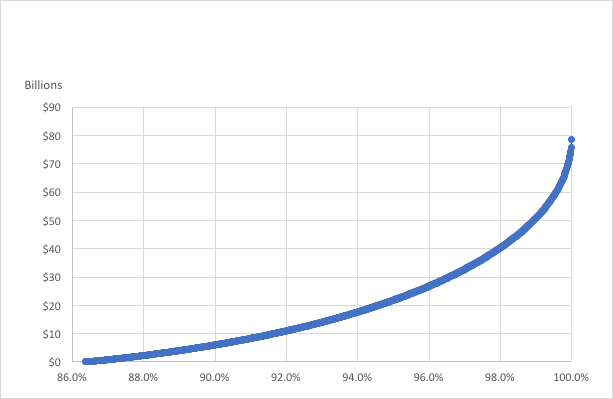
- Improving the nation’s digital-infrastructure should be a significant part of any national-infrastructure plan, as the economic upside for the country from accelerating investment in broadband is likely greater than from most other areas of infrastructure investment.
“Unlike most other types of infrastructure, the nation’s digital infrastructure is largely corporate owned and generates revenues from paying subscribers,” de Sa said. “However, the private carriers who invest in broadband capex do not, in general, capture the full benefits of those investments, so their investment levels are lower and slower than would be optimal for the country. The public-policy challenge, therefore, is to increase largely private capital flows to levels consistent with the potential public benefits of abundant, ubiquitous broadband without crowding out existing private-sector investment,” he said.
2. The primary goal of federal actions with respect to digital infrastructure should be to increase and accelerate profitable, incremental private-sector investment to achieve at least 98 percent nationwide deployment of future-proofed, fixed broadband networks.
“We estimate that the total upfront capex required to deploy FTTP to the 14 percent of locations lacking access would be ~$80b but, because of the shape of the cost curve, ~98 percent coverage could be attained for ~$40b,” de Sa said. (see chart). “Unlike the last 2 percent, moreover, we do not expect these first 12 percent of locations will require material ongoing support once the network has been built, as subscriber revenues should be sufficient to pay for ongoing network costs,” he said.
3. The policy measures that can be used to achieve the goal of accelerating private-sector investment to achieve ubiquitous digital infrastructure for the nation are: (i) direct funding support to reduce the cost of capital; (ii) changes to the tax code to increase the return on invested capital, and (iii) operations-related actions to enhance the productivity of capex. A national-infrastructure plan should include initiatives in some, or all, of these categories.
Once the direct funding structure has been decided, de Sa said, the three main aspects of a digital infrastructure plan are:
-
- Defining the objective of the effort
- Allocating the funds
- Oversight of funding recipients
According to the report, tax-related initiatives should be instated to increase the return on invested capital.
“Changing the way in which digital infrastructure investments are treated under the tax code would increase potential returns and hence stimulate investment,” de Sa said. Areas he felt should be considered include:
- Clarifying and accelerating depreciation schedules for broadband-related capex, e.g., on fiber and fiber-related equipment.
- Targeting tax credits for broadband-related investments, e.g., by type of investment and/or geography.
- Ensuring that direct funding to stimulate capex is treated as a contribution to capital under Section 118 of the Internal Revenue Code rather than as taxable income.
“The FCC can undertake many of these initiatives without any change in law,” de Sa said. “For example, the Commission’s Wireless Telecommunications Bureau recently sought comment on how federal law applies to local government review of wireless facility siting applications and local requirements for gaining access to rights of way. Congress may wish to consider additional initiatives to remove barriers to broadband deployment,” he said.
January 24, 2017





Reader Interactions